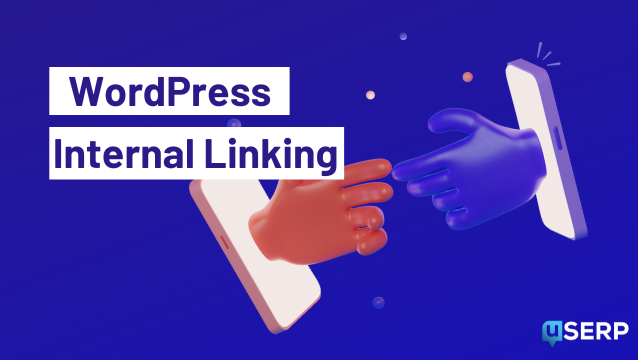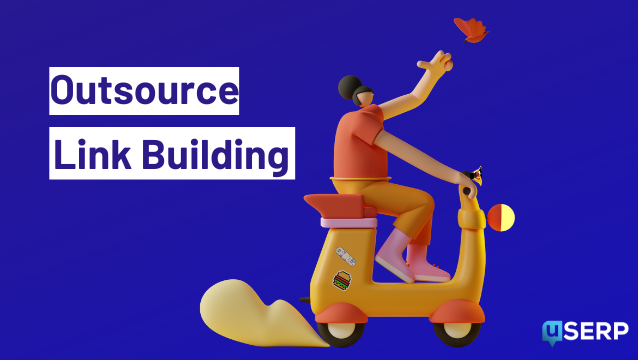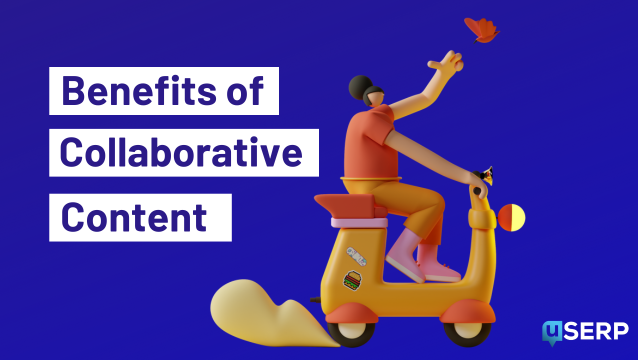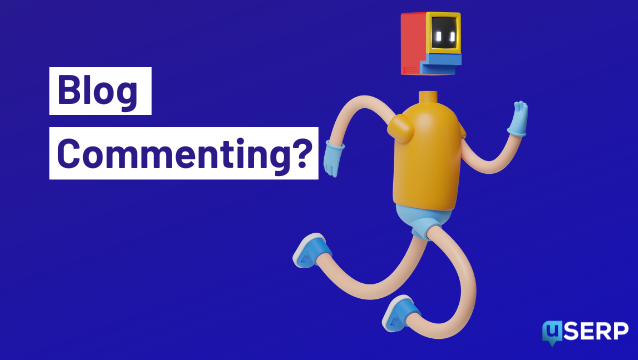SEO and content marketing are two of the most effective tools you can use when trying to build a business with genuine success potential. When done right, you can employ them to reach, engage, and convert audiences. Yet even though content and SEO are so connected, many marketers still struggle with optimizing both for their audiences and search engines.
But the thing is, ensuring that content ranks high on SERPs while offering genuine value to readers is the only way to tap into the impressive ROI it can deliver.
Do you want to learn about the relationship between SEO and content marketing? If your answer is yes, here’s the complete guide on how to optimize for your audience and search engines.
The optimization journey always begins with research
Creating content that ranks well on Google is one of the best ways to build a name for your business. After all, that’s what people first turn to when looking for answers online, but only 0.63% of people click on a result from the second page of Google. Thus, it’s easy to conclude that SEO is the name of the game for securing organic traffic for your website.
Yet, if your content doesn’t appeal to your target audience, all that traffic won’t amount to much.
So, you must start the production journey with in-depth audience research when developing a content marketing strategy and learning how to turn your articles into revenue-driving assets.
Producing high-quality posts (whatever your chosen format may be) isn’t just about clicking that “Publish” button as often as possible. More importantly, it’s about identifying your brand’s ideal customers. It requires you to understand their pain points. And you must know what unique value your business can offer. Utilizing social media platforms effectively to disseminate your content and engage with your audience can further enhance your content marketing strategy.
If you can get these three elements right, you’ll be well on your way toward turning content marketing into the profit-generating business activity it can be.
Identify the right keywords to target
Okay, so you know who you want your posts to appeal to. Now, it’s time to start looking into how your target audience searches for answers and solutions online.
The only way to guarantee that the right people discover and click on your content is to do thorough keyword research. Then, you can use those search terms to produce valuable, engaging posts that capture new customers for your brand.
The best place to start this research process is to define some initial keywords. These should be simple terms and concepts for your business’ products and services. But try to avoid producing content around general topics (which you’ll have difficulty ranking for). Instead, do your best to be specific.” – says Martin Kanaan, Head of Marketing and Business Development at MakoLab
For instance, a business selling supplements may try to optimize an article for the keyword “supplements.” However, that term is too broad to attract high-quality leads, plus it’s also difficult to rank for.
Screenshot provided by Author
The better solution would be to narrow the topic and write about a more specific type of supplement. For example, targeting “pre-workout supplements” would be a better target. With a solid monthly search volume, a good organic CTR, and acceptable difficulty, this is a step in the right direction. Yet, there’s still room for improvement.
Screenshot provided by Author
By going even more specific and adding the phrase “to minimize workout fatigue” to the chosen search term — like ATH did with its Best Natural Pre-Workout Supplements to Minimize Workout Fatigue — the brand can secure position #1 on Google. This will ensure it reaches its target audience and achieves a higher conversion rate on its website.
Source: athsport.co
Optimize for search intent
Conducting thorough keyword research is an excellent first step toward getting your content to rank on SERPs. Still, many beginner marketers fall into the trap of thinking that stuffing articles with relevant search terms is enough to attract their audiences. But this couldn’t be further from the truth. Even though keywords contribute to SEO, they’re just one factor in how Google ranks results.
So, besides using the right keywords to ensure your audience discovers your content, you also must optimize for search intent.
Search intent (also called user intent) refers to the purpose behind every Google search. Most SEO experts differentiate between four types of search intent.
- Navigational — where the Google user wants to visit a specific website or physical location.
- Informational — where internet users have questions and need answers.
- Commercial — where consumers want to learn about products that can solve their pain points.
- Transactional — where buyers want to purchase.
Optimizing for search intent isn’t just good for SEO (even though Google heavily emphasizes user value as a ranking factor). Another significant benefit of creating content that aligns with user intent is encouraging desired on-site user behaviors. It boosts on-page time and click-through rates while minimizing bounces.
Furthermore, search intent-optimized content also supports your branding efforts. It can help position your business as a reliable resource your audience can trust to deliver valuable information relevant to their position in the buyer’s journey. By crafting search intent-optimized content, you foster audience engagement, encouraging meaningful interactions and building a community around your brand.
So, how do you optimize pages for search intent? The most essential step is understanding what your prospects want from your content. From there on, the process will be relatively straightforward.
- To align with navigational intent, create content that provides web visitors with straight-to-the-point information. You can create a simple contact page on your website. You may create a form that lets potential customers send you an email. Or, if you want to go over the top, create an advanced resource listing brick-and-mortar locations like the Locations page on the Taco Bell website.
Source: tacobell.com
- When optimizing for informational intent, your priorities should differ slightly. In this situation, you’re trying to cater to an audience researching a chosen topic. So add informational terms to your post title (like “guide,” “how to,” “anatomy of,” etc.) to help with discovery. Be super committed to providing in-depth answers. And don’t forget to focus on reader value over sales.
- To produce effective commercial intent content, your primary focus should be establishing your brand’s reputation as a trustworthy source of purchasing advice. Present your audience with lots of relevant and objective information, leveraging insights from procurement analytics where applicable. And always back your advice with trust-building elements, demonstrating a data-driven approach to sourcing and procurement decisions.
For example, Eachnight’s Best Mail Order Mattress Choices to Buy in 2023 guide includes an impressive Why Trust Us section. This element is an excellent way for the brand to earn its audience’s trust and maximize their chances of converting once they’re ready to buy.
Source: eachnight.com
- Finally, to optimize for transactional search intent, you need to focus your efforts on enhancing product pages in a way that’ll inspire purchases. Write informative product descriptions. Use high-quality product photos. And don’t forget to optimize for purchase-oriented keywords like “buy,” “near me,” “affordable,” etc.
Pay attention to content structure
Creating content that ranks requires you to do thorough research, target the right keywords, and prioritize user value. But that’s not where the work ends. Layout design also plays a significant role in ensuring your posts attract customer attention and convert.
Keep in mind that people don’t really read online. According to Nielsen, they prefer to scan resources according to specific patterns to find relevant bits of information. Knowing this, it’s safe to say that paying attention to content structure and layout plays a huge role in optimizing for your audience.
But here’s the thing. Properly structuring content doesn’t just benefit web visitors — it’s also essential for SEO.
So, to ensure your content ranks, always use clear headings and subheadings (H1, H2, H3, and even lower-level ones). Also, make sure they include your target keywords. Doing this aids search engines in understanding what your content is about. Moreover, it informs the algorithm about how each article section relates to the topic you’re writing about.
For example, check this article on net worth tracker review. It utilizes concise, keyword-rich headings like “Select Your Accounts,” “Link Financial Accounts,” and “Customize Your Dashboard” without any fluff. The article also contains data tables and focused content sections rather than blocks of dense text. Structuring an article in this way helps search engines properly index and rank the content.
For a great example, check out the Golf Cart Accessories product collections page on the Golf Cart Tire Supply website. You’ll see how the content employs H2, H3, and H4 headings. Note how each refers to products made for use with different golf carts.
Source: golfcarttiresupply.com
But there are other reasons to ensure your content isn’t just a block of text but a series of logically ordered paragraphs. Structured and scannable content allows you to maximize accessibility. And this can be crucial in helping you reach a bigger audience.
You can take structure to the next level by employing tables of contents with clickable jump links. Smash.vc does this in the Best Investing Newsletters guide. Here, it allows readers to quickly get to the part of the article most relevant to their needs.
Source: smash.vc
The great thing about structuring content for SEO and content marketing success is that it doesn’t need to be time-consuming.
You can use free website optimization tools like Yoast, which has a subheading distribution check feature. The feature makes it super-easy to break up your texts into user-friendly paragraphs. One of the easiest ways to get it right is to choose the best blog post template for your goals.
Focus on text understanding
You can use layout design to make your articles more accessible. But, prioritizing readability can further boost your SEO and content marketing efforts.
Ease of reading is a crucial factor for UX (which indirectly affects your Google rankings). If you write posts in simple, easy-to-understand language, web visitors can quickly find answers to their questions.
Moreover, they’ll be more likely to engage with your site. Additionally, offering downloadable PDF versions of your content through a PDF converter can cater to users who prefer offline reading.
As a result, search engines will pick up on those behavioral cues and improve your rankings. Plus, if you look at the research, you’ll see that readability positively affects conversion rates as well.
With this in mind, pay attention to how you write your content. Remember to:
- Optimize for clarity.
- Avoid using complex language (and jargon).
- Opt for simple sentence structures.
- Shorten your paragraphs.
- Employ design strategies to improve readability using fonts, colorways, and contrast ratios.
Finally, don’t underestimate the role of visuals in aiding content comprehension.
Scientific research has shown that illustrations positively impact information understanding. Plus, using images, videos, data representations, or interactive content can make breaking up sections of your articles easier. You can also use these elements as relevant resources that help readers digest what they have read before moving on to the next part of the text.
One of the best examples of this readability-enhancing strategy in action comes from Tasty. In the Baking Hacks resource, the author backs up each section of the text with example photos. These photos allow readers a respite from reading and serve as part of the instructions. They present readers with visual cues and guide them toward achieving excellent results when implementing real-life hacks.
Source: tasty.co
Choose relevance and insights over word count
Most marketers understand that quality beats quantity. Still, they find it challenging to balance word count and value for SEO and content marketing.
On the one hand, longer articles perform slightly better on SERPs than their short counterparts. According to Backlinko, the average first-page Google result is 1,447 words long, and long-form content gets more backlinks and social shares.
But then again, writing more than your competitors doesn’t guarantee a positive user experience. Readers want resources that answer their questions — not rambling texts that waste their time for no good reason.
With this in mind, always prioritize audience value when working on SEO and content marketing. Use your company blog to present readers with relevant information; don’t be afraid to take it further. Consider whether you can share any insights to make your articles the best choice for your target audience.
To achieve this effect, you must:
- Invest in collaborative content to bring a fresh point of view to your company’s blog.
- Showcase your team’s industry experience.
- Always rely on your expertise.
Furthermore, don’t be afraid to point out why your articles are the best resources for consumers to learn about a topic.
For a great example, look at how Medical Alerts Buyers Guide does it in its Best Medical Alert Watches for Seniors guide. On this page, readers can learn that the author is a professional writer specializing in Medicare regulations. A look at the topmost section of the page also reveals that a registered nurse has medically reviewed the guide.
These pieces of info may seem excessive for basic content marketing, but they work great for the brand. They prove that the shopping advice in the article relies on insights and expertise instead of just being an attempt to sell more products.
Source: medicalalertsbuyersguide.org
Finally, don’t forget that something as simple as doing competitor research will set you up for success.
Knowing what your competition is writing about is a good way of finding inspiration for new topics to blog about. More importantly, it can be a shortcut toward uncovering content gaps and opportunities. It can allow you to dominate your industry by answering user questions no one else is focusing on.
Don’t forget about technical optimization
SEO and content marketing work with your site’s technical performance. Both marketing techniques benefit from web design optimized for responsiveness and speed.
Google has confirmed that page speed is a ranking factor. It also strongly encourages websites to adopt responsive design practices. Paying attention to these two aspects of your site’s performance will help create pages that appeal to your visitors.
For years, most global web traffic has been coming from mobile devices. People often become frustrated when interacting with slow or unresponsive pages. Use all available website optimization tools to create an unmatched website UX.
Encourage interactions and promote sharing
Finally, don’t forget that optimizing your ROI requires you to encourage users to interact with multiple parts of your site. The more people interact with your website, the more valuable it’ll seem to Google when ranking search results.
By enhancing content pages with the right CTAs, you can:
- get people to browse more pages
- capture them as leads and inspire them to convert
- get them to share your content with their peers, giving you more exposure
These are all behaviors that’ll benefit your business. They’ll increase your leads’ chances of solving their pain points and serve as ranking signals for Google.
There are many different ways to accomplish this goal.
For instance, to boost engagement, you can always enhance content pages with relevant suggestions for further reading.
Or, you can do what Vivion does on its Xylitol page and add a contact CTA to the bottom of your blog posts. Note how this page invites readers to “Ask one of [Vivion’s] experts about Xylitol.” B2B buyers usually use a combination of independent research and supplier communication before making a purchase decision. This is a great way to capture them as leads and move them along the sales funnel.
Source: vivion.com
Finally, don’t forget to employ the potential of internal links in your articles. They can be excellent ways to inspire brand engagement or conversions without putting sales pressure on first-time web visitors. Look at how seamlessly Frame It Easy does it in its Puzzle Frames tips article below.
Source: frameiteasy.com
Final thoughts
Investing in SEO and content marketing — especially when you let them work together — can be a fantastic strategy for your business. However, ranking high on Google and getting a high ROI requires a lot of work.
So, in addition to implementing the advice outlined in this guide, don’t forget to regularly assess the resources you publish. Doing so will allow you to track performance based on your pre-set goals. It’ll also allow you to catch new opportunities before competitors. Yes, it’ll take up some of your resources. But it can be the key to becoming the first place your target audience chooses when looking for reliable, high-quality content or advice.
- How to Craft Online Marketing Content for Your Brand With the Ideal Customer in Mind - April 4, 2024
- SEO and Content Marketing: How to Optimize for Your Audience and Search Engines - November 21, 2023
- 8 Types of Marketing Content You Should Add to Your Strategy + 13 Great Examples - September 5, 2023









